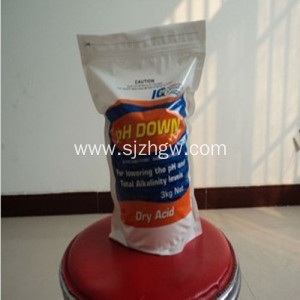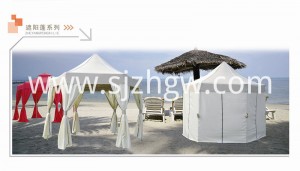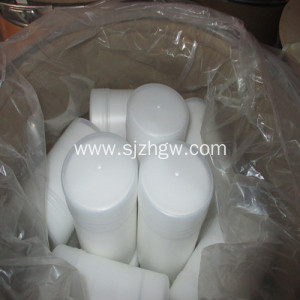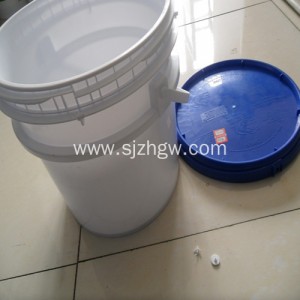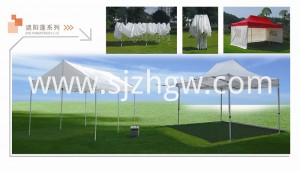Pool Minus pH Down Dry Acid Sodium Bisulfate
Short Description:
Basic Info Appearance: Crystal Kind: Inorganic Acid Quality: Tech Grade Packing: Plastic Drum Additional Info Packaging: Plastic drum or plastic bags Brand: OEM Transportation: Ocean Place of Origin: China Certificate: ISO9001 Product Description Sodium bisulfate, Sodium hydrogen sulfate, reagent, anhydrous, 95.0+%, 100g Sodium bisulfate is used primarily to lower pH. For technical-grade applications, it is used in metal finishing, cleaning products, and to lower the p...
Basic Info
Appearance: Crystal
Kind: Inorganic Acid
Quality: Tech Grade
Packing: Plastic Drum
Additional Info
Packaging: Plastic drum or plastic bags
Brand: OEM
Transportation: Ocean
Place of Origin: China
Certificate: ISO9001
Product Description
Sodium bisulfate, Sodium hydrogen sulfate, reagent, anhydrous, 95.0+%, 100g
Sodium bisulfate is used primarily to lower pH. For technical-grade applications, it is used in metal finishing, cleaning products, and to lower the pH of water for effective chlorination, including swimming pools. Sodium bisulfate is also AAFCO approved as a general-use feed additive, including companion animal food. It is used as a urine acidifier to reduce urinary stones in cats.
CAS Number: 7681-38-1
Molecular Formula: NaHSO4
Molecular Weight: 120.06
IUPAC Name: Sodium hydrogen sulfate
Other Names: Sodium acid sulfate, Bisulfate of soda
Sodium bisulfate, also known as sodium hydrogen sulfate is the sodium salt of the bisulfate anion, with the molecular formula NaHSO4. Sodium bisulfate is an acid salt formed by partial neutralization of sulfuric acid by an equivalent of sodium, typically either in the form of sodium hydroxide or sodium chloride. It is a dry granular product that can be safely shipped and stored. The anhydrous form is hygroscopic. Solutions of sodium bisulfate are acidic, with a 1M solution having a pH of < 1.
In jewelry making, sodium bisulfate is the primary ingredient used in many pickling solutions to remove the oxidation layer from surfaces, which occurs after heating.
It is highly toxic to at least some echinoderms, but fairly harmless to most other life forms; sodium bisulfate is used in controlling outbreaks of crown-of-thorns starfish.

